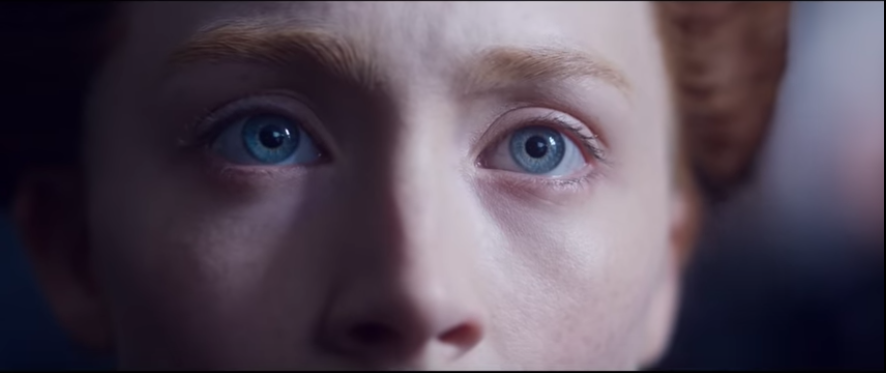Your gifts are your downfall.
Last week I got the chance to go see for the second time the beautiful film Mary Queen of Scots by British film director Josie Rourke, starring Saoirse Ronan in the title role and Margot Rosie as her cousin, Queen Elizabeth I. The film was nominated this year for the Academy Awards for Best Costume Design and Best Makeup and Hairstyling. Everything about the film is stunning, from the acting to the costumes, the photography, and, of course, Max Richter’s amazing score.
The film tells the story of Mary’s return to Scotland after the death of her husband, and makes a parallel between her personal and political situation and that of her cousin, Elizabeth I. Despite their differences, especially in their attitude towards marriage and childbearing, we see them both struggling to keep their power as women while being surrounded by brutal men that would see them as inferior and weak, and would want nothing less than to usurp their respective thrones. In the case of Mary, this is what ultimately happens, and she must flee to England, seeking the uncertain support and protection of her cousin.
The music very much accompanies underlines the feeling of doom in the story, which is also given by the form of the film itself: we begin with the moment where Mary is going to be beheaded, which is also the first time we hear the music that we will later associated with both Mary and Elizabeth alike. There are two elements in this piece that will be always present in the film in one way or another: the execution drums and the arpeggiated chords.
The meaning of the execution drums is quite clear: they represent Mary’s ultimate fate, which is that she will be beheaded in England for a (questionable) attempt against her cousin’s life. When I watched the film for the first time, I must admit it escaped me, but on a closer listen (both by listening to the soundtrack separately and by watching the movie again) I realized that the drums are almost always present when the music is associated with Mary. Regardless of what moment in the story we are, the drums always remind us that this is going to end tragically anyway. This adds, in some unconscious way, to the ever present feeling that things are not going to turn out well with Mary, even from the beginning when things seem to be going forward.
The arpeggios I associate with what Richter himself calls the “feminine” aspect in the music. Arpeggios flow horizontally. moving forward as if rushing us into the future. During the whole film, we see both Mary and Elizabeth as monarchs that question and challenge the stifled, archaic political systems that their male counterparts seek to preserve at all cost. Mary, by trying to bring more religious tolerance into Scotland, and Elizabeth by remaining single for her whole life, thus relinquishing her “duty” as a female to bear child. These arpeggios suggest how both monarchs are trying to push their countries forward with their ideas and actions.
Why “feminine”? Because, of course, there is of course the “masculine” aspect in the music, which is given by the percussion. Drums are always associated with war and death in the film, from the war drums played in different scenes in the film, to Mary’s own execution drums that seal her doom. Men in the film are always complicating things and bringing death and suffering. Mary’s own half-brother betrays her by making allies with the enemy, Mary’s husband Lord Darnley sleeps with Razzio the minstrel on their own wedding night, Elizabeth’s council pressures her to marry and have a child against her own will. A lot of these moments are accompanied by drums, symbolizing the brutality (and stupidity, I’d say) of men, in contrast with the intelligence and open-mindedness of women.
The film bears rewatching, and every time you’ll find some new detail in it. I definitely recommend it, and would watch it again if I get a chance. They’re phasing it out here in the Netherlands but it’s still being screened in Pathé Buitenhof (The Hague), Pathé City (Amsterdam), Pathé Tuschinski (Amsterdam), and some filmhuizen around the country (check cineville.nl).
header image source here
